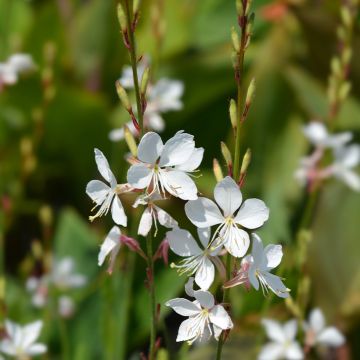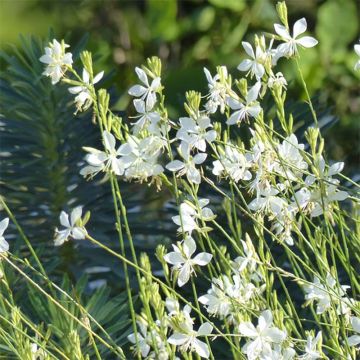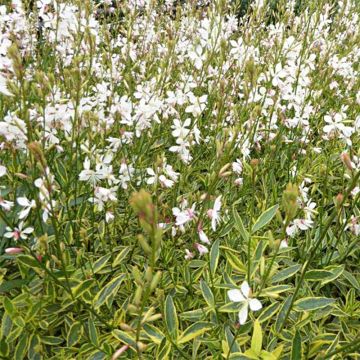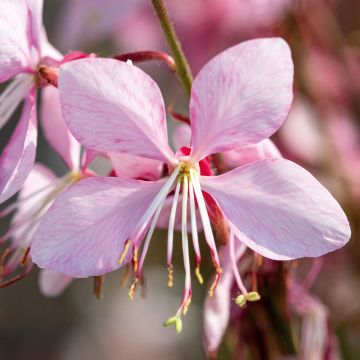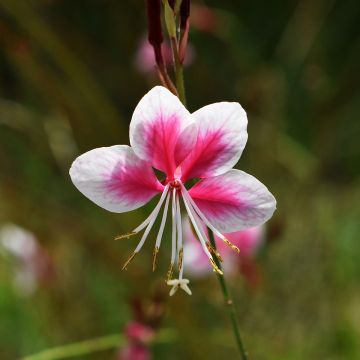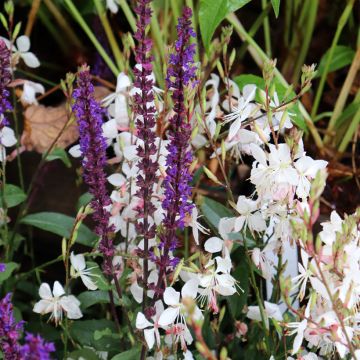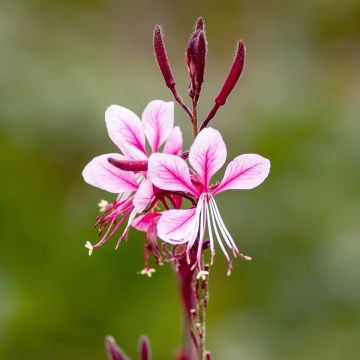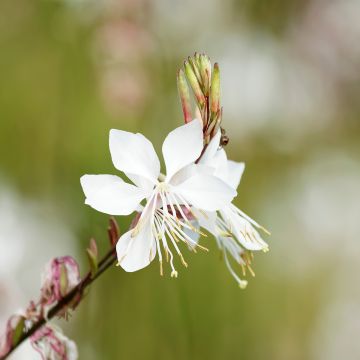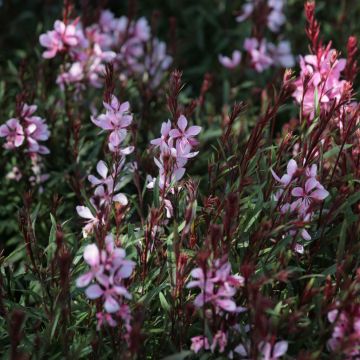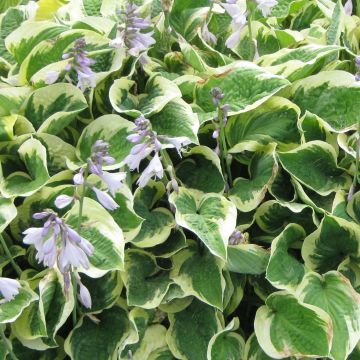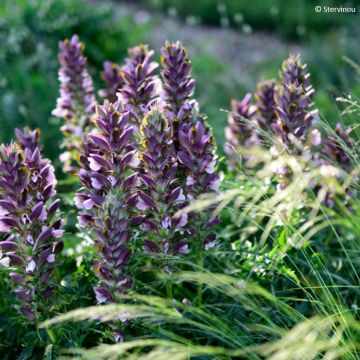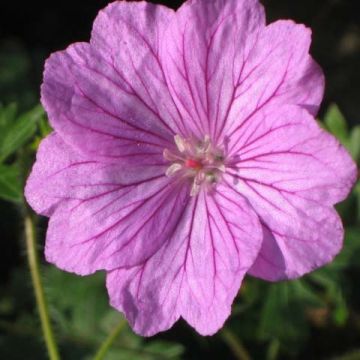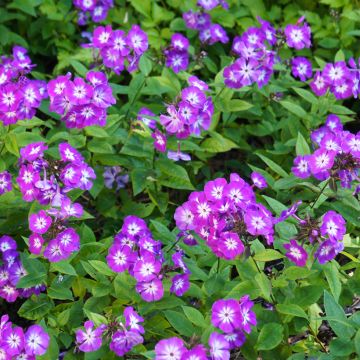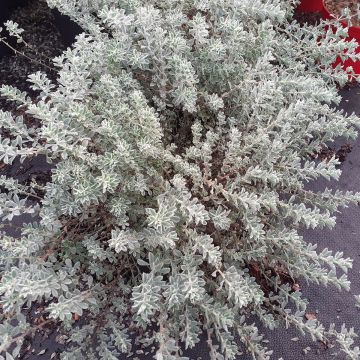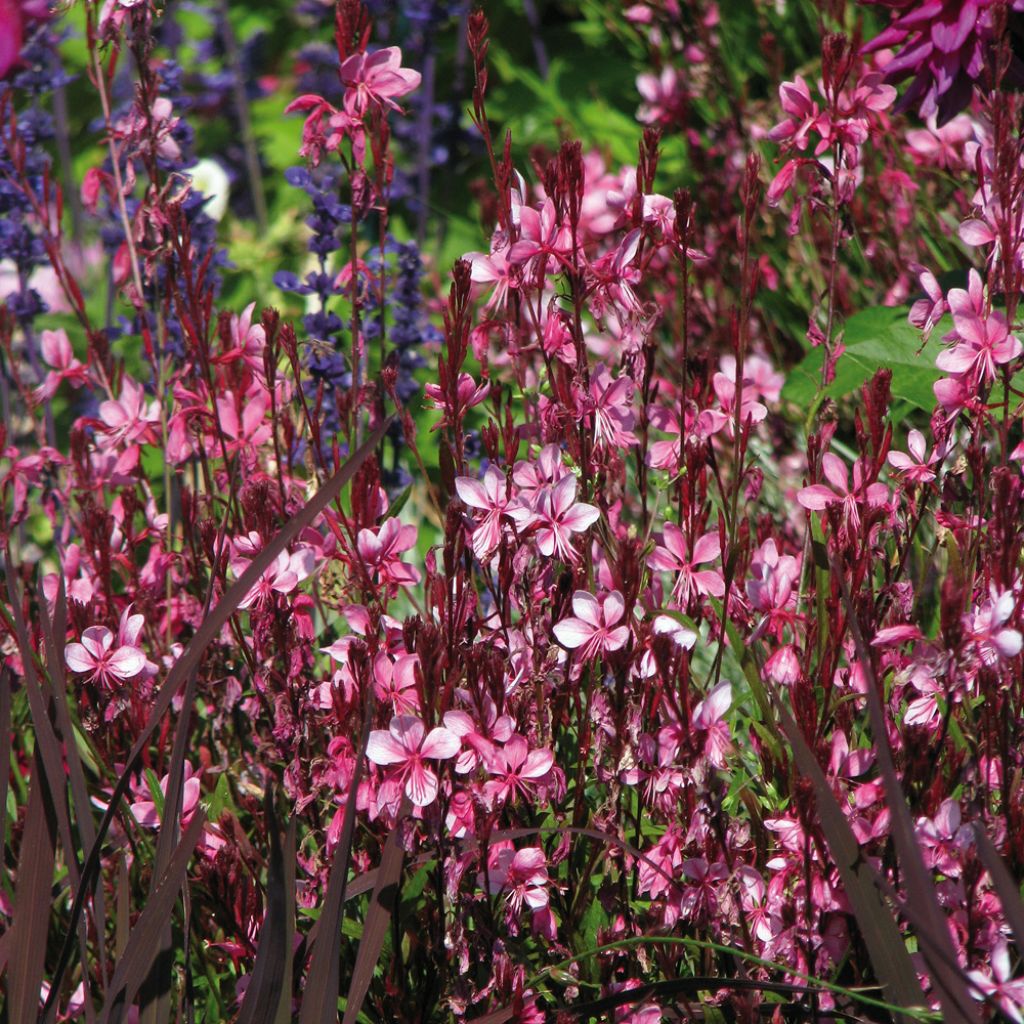

Gaura lindheimeri Lollipop Pink
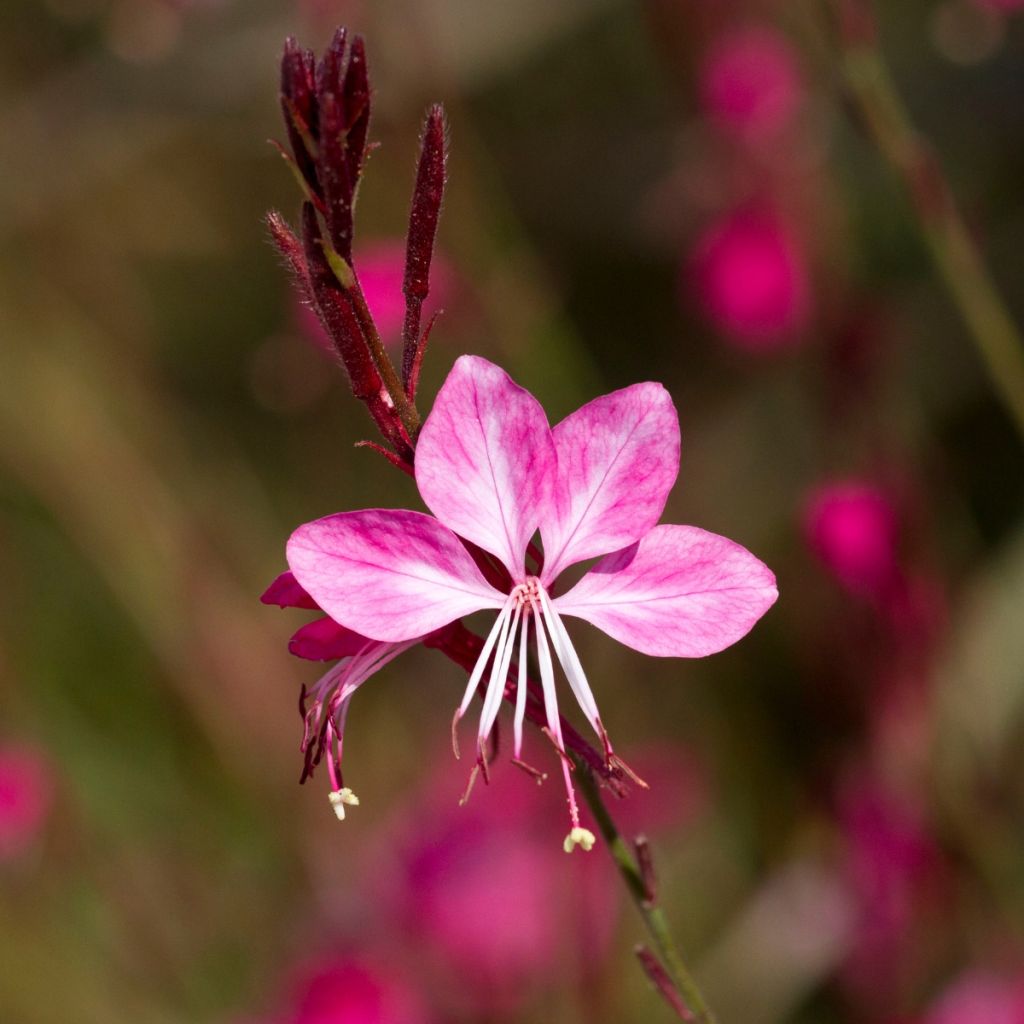

Gaura lindheimeri Lollipop Pink
Gaura lindheimeri Lollipop Pink
Gaura lindheimeri Lollipop Pink
Beeblossom
This item cannot be shipped to the selected country
Delivery charge from €5.90
Delivery charge from €5.90
More information
Schedule delivery date,
and select date in basket
This plant carries a 6 months recovery warranty
More information
We guarantee the quality of our plants for a full growing cycle, and will replace at our expense any plant that fails to recover under normal climatic and planting conditions.
From €5.90 for pickup delivery and €6.90 for home delivery
Express home delivery from €8.90.
From €5.90 for pickup delivery and €6.90 for home delivery
Express home delivery from €8.90.

Does this plant fit my garden?
Set up your Plantfit profile →
Description
Gaura 'Lollipop Pink' forms a compact and ramified bush, ideal for pots and containers. It covers its red stems with abundant dark pink flowers over dark foliage shaded with purple, and its growth is rapid. Although short-lived this plant is both elegant and proud, indispensable in the flower garden. Ideal in not too dry to moist, or even poor soil, in the sun.
Gaura linddheimeri Lollipop Pink belongs to the family Onagraceae and is a cousin of evening primrose. Gaura lindheimeri is native to the area on the border between Mexico and the United States (the prairies and pine forests of Louisiana and Texas). One of the most floriferous plants, 'Lollipop Pink' has a compact and bushy habit. Forming a clump from a rosette, this perennial is of modest size for a gaura, not exceeding 40 cm (15.7 in) in height, with a spread of 30 cm (11.8 in). Its branching dark red floral stems, very numerous and slender, give the plant its bushy appearance. Flowering takes place in successive waves, from mid-spring to autumn. The flowers, resembling butterflies, are grouped in paniculate spikes of 30 cm (11.8 in) in length, of bright pink washed with dark pink. The foliage is novel. The lamina of each leaf is dark green, shaded with purple or mauve. These small lanceolate leaves are downy on both sides. The plant has a taproot that allows it to anchor itself in poor or even rocky soils.
Gauras have quickly become the stars of urban flowerbeds and gardens. This success is explained by their incredible abundance of flowers and the speed with which they develop. These plants, which seem unperturbed by the wind, quickly become indispensable for anyone who has tried them for a season. Wherever they are planted they bring lightness and grace. Gaura lindheimeri 'Lollipop Pink' has its place in the foreground of herbaceous borders or flowerbeds. It goes well with roses, grown between shrubs like abelias and deutzias, or accompanying frugal perennials like daylilies, catmints, Scabiosa Moon Dance, Asclepias Ice Ballet, and Oenothera versicolor. This compact and floriferous little gaura is ideal for dressing up containers and pots.
Note: Please be aware that our young plants sold in mini plugs are professional products intended for experienced gardeners: upon receipt, transplant and store them under cover (veranda, greenhouse, frame) at a temperature above 14°C for a few weeks, before being placed outdoors once all risk of frost has passed.
Report an error about the product description
Flowering
Foliage
Plant habit
Botanical data
Gaura
lindheimeri
Lollipop Pink
Onagraceae
Beeblossom
Cultivar or hybrid
Other Gaura - Bee Blossom
Planting and care
As long as it is very well-drained, Gaura 'Lollipop Pink' is not picky about the soil which can even be poor, and occasionally dry. The only enemy of this plant is stagnant humidity - a bigger threat than even the cold. If necessary improve drainage by incorporating materials such as gravel and river sand. In these conditions it will live for several years. Pruning is essential after each wave of flowering to facilitate the emergence of new shoots that will bloom in turn. With this method, multiple flowerings can be achieved from June until Halloween without interruption (do not prune all the clumps in the garden at the same time). Pruning at the start of growth (March-April) will give the plant a harmonious shape.
Planting period
Intended location
Care
-
, onOrder confirmed
Reply from on Promesse de fleurs
Summer flowering perennials
Haven't found what you were looking for?
Hardiness is the lowest winter temperature a plant can endure without suffering serious damage or even dying. However, hardiness is affected by location (a sheltered area, such as a patio), protection (winter cover) and soil type (hardiness is improved by well-drained soil).

Photo Sharing Terms & Conditions
In order to encourage gardeners to interact and share their experiences, Promesse de fleurs offers various media enabling content to be uploaded onto its Site - in particular via the ‘Photo sharing’ module.
The User agrees to refrain from:
- Posting any content that is illegal, prejudicial, insulting, racist, inciteful to hatred, revisionist, contrary to public decency, that infringes on privacy or on the privacy rights of third parties, in particular the publicity rights of persons and goods, intellectual property rights, or the right to privacy.
- Submitting content on behalf of a third party;
- Impersonate the identity of a third party and/or publish any personal information about a third party;
In general, the User undertakes to refrain from any unethical behaviour.
All Content (in particular text, comments, files, images, photos, videos, creative works, etc.), which may be subject to property or intellectual property rights, image or other private rights, shall remain the property of the User, subject to the limited rights granted by the terms of the licence granted by Promesse de fleurs as stated below. Users are at liberty to publish or not to publish such Content on the Site, notably via the ‘Photo Sharing’ facility, and accept that this Content shall be made public and freely accessible, notably on the Internet.
Users further acknowledge, undertake to have ,and guarantee that they hold all necessary rights and permissions to publish such material on the Site, in particular with regard to the legislation in force pertaining to any privacy, property, intellectual property, image, or contractual rights, or rights of any other nature. By publishing such Content on the Site, Users acknowledge accepting full liability as publishers of the Content within the meaning of the law, and grant Promesse de fleurs, free of charge, an inclusive, worldwide licence for the said Content for the entire duration of its publication, including all reproduction, representation, up/downloading, displaying, performing, transmission, and storage rights.
Users also grant permission for their name to be linked to the Content and accept that this link may not always be made available.
By engaging in posting material, Users consent to their Content becoming automatically accessible on the Internet, in particular on other sites and/or blogs and/or web pages of the Promesse de fleurs site, including in particular social pages and the Promesse de fleurs catalogue.
Users may secure the removal of entrusted content free of charge by issuing a simple request via our contact form.
The flowering period indicated on our website applies to countries and regions located in USDA zone 8 (France, the United Kingdom, Ireland, the Netherlands, etc.)
It will vary according to where you live:
- In zones 9 to 10 (Italy, Spain, Greece, etc.), flowering will occur about 2 to 4 weeks earlier.
- In zones 6 to 7 (Germany, Poland, Slovenia, and lower mountainous regions), flowering will be delayed by 2 to 3 weeks.
- In zone 5 (Central Europe, Scandinavia), blooming will be delayed by 3 to 5 weeks.
In temperate climates, pruning of spring-flowering shrubs (forsythia, spireas, etc.) should be done just after flowering.
Pruning of summer-flowering shrubs (Indian Lilac, Perovskia, etc.) can be done in winter or spring.
In cold regions as well as with frost-sensitive plants, avoid pruning too early when severe frosts may still occur.
The planting period indicated on our website applies to countries and regions located in USDA zone 8 (France, United Kingdom, Ireland, Netherlands).
It will vary according to where you live:
- In Mediterranean zones (Marseille, Madrid, Milan, etc.), autumn and winter are the best planting periods.
- In continental zones (Strasbourg, Munich, Vienna, etc.), delay planting by 2 to 3 weeks in spring and bring it forward by 2 to 4 weeks in autumn.
- In mountainous regions (the Alps, Pyrenees, Carpathians, etc.), it is best to plant in late spring (May-June) or late summer (August-September).
The harvesting period indicated on our website applies to countries and regions in USDA zone 8 (France, England, Ireland, the Netherlands).
In colder areas (Scandinavia, Poland, Austria...) fruit and vegetable harvests are likely to be delayed by 3-4 weeks.
In warmer areas (Italy, Spain, Greece, etc.), harvesting will probably take place earlier, depending on weather conditions.
The sowing periods indicated on our website apply to countries and regions within USDA Zone 8 (France, UK, Ireland, Netherlands).
In colder areas (Scandinavia, Poland, Austria...), delay any outdoor sowing by 3-4 weeks, or sow under glass.
In warmer climes (Italy, Spain, Greece, etc.), bring outdoor sowing forward by a few weeks.

































